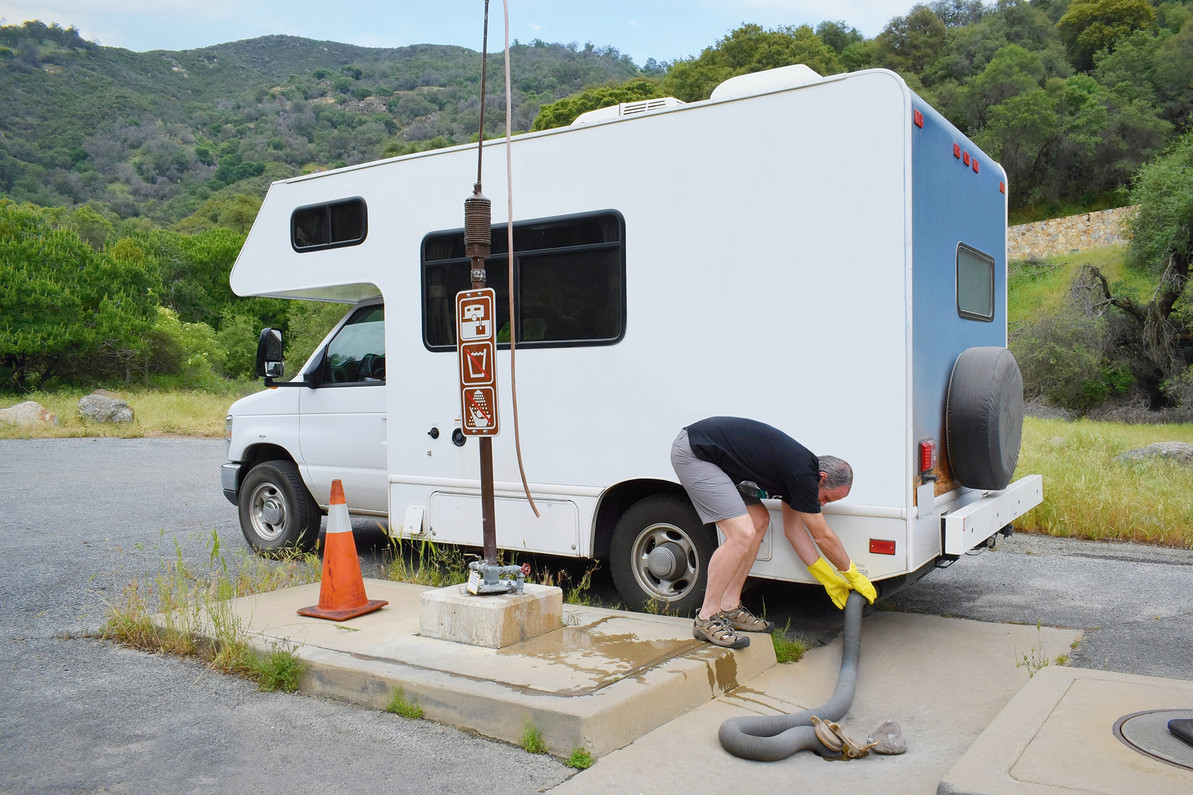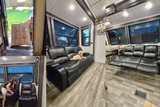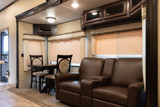What Can I Flush Down My Black And Gray Water Systems?
The black and gray water system in your RV is sensitive, with different needs than a fresh water tank. Because of this, many RVers can find themselves in the frustrating situation of dealing with odors, clogs, and more. So, how do you avoid this? Well, first, it’s important to know that what you flush down the toilet, sink, and shower really matters. These contents have a huge impact on the health and function of your black and gray water systems. Because of this, you’ll need to be picky about what gets flushed. To find out what these flushable and non-flushable items are, keep on reading.
What Goes in the Black Waste Holding Tank?
The black water holding tank is what stores the contents of the toilet. The items that are okay to flush down the toilet are: human feces and urine, RV toilet paper, water, and non-hazardous RV holding tank treatments. Nothing else should be flushed down the toilet. Don’t flush trash of any kind, food, feminine hygiene products, flushable wipes, or caustic cleaners. While your residential system might be able to handle some of these, your RV black water tank cannot. If you do flush one of these items, you could find yourself needing to unclog your black water tank, which is a pretty terrible way to spend your vacation time. Plus, you’ll have bad odors and other clogs throughout the system.
As a note on the toilet paper, it is necessary to have either RV-specific toilet paper or toilet paper that has been confirmed to break down easily. While the toilet paper that you use in your residential home might be softer, this kind will clog up the pipes and cause problems. To make sure that your toilet paper will work with your RV’s water system, try the jar test. First, place some toilet paper into a jar. Fill the jar with water and let it sit for a while. You can shake it a little, but you shouldn’t try and break it up in any other way. Once it’s been a few minutes, take a look at the toilet paper. If it’s broken up, it’s safe for your RV water system. If the toilet paper is still in one piece, it’s not good and you shouldn’t use it.
What Goes in the Gray Waste Holding Tank?
The gray water holding tank is what stores the contents of the sinks and shower and any other drain that is not the toilet. You should only let water, soap, and non-hazardous RV holding tank treatments go down these drains. Don’t rinse any soap scum, decomposing food, grease, or hazardous chemicals down these drains. While they might not clog the drains as much as toilet paper would clog the drains of the black water system, they have a different and to some, more frustrating problem. If these products make their way into the gray water tank, they begin to deposit a thin layer of residue that builds up on the floor and walls of the tank as well as on the sensors. This causes the sensors to misread the levels in the tank and cause some pretty bad smells. If it’s not taken care of with a non-hazardous tank treatment, they can create strong smells that are even worse than those from your black water tank. To prevent these items from getting into your gray water system, be vigilant about what goes into your shower and sink and use a strainer on your kitchen sink.
What Chemicals Should You Avoid with a Black or Gray Water Tank?
As stated above, you can’t use chemicals that aren’t intended for the black and gray water systems. These chemicals harm the necessary bacteria that grows inside of the tank. This bacteria promotes waste breakdown and removal, which is why it’s so important that it stays there. But these chemicals can often kill this bacteria, which halts the breakdown process and results in clogs, backups, smells, and expensive fixes.
But, what chemicals are they? The chemicals that can’t go down your drains are as follows:
- Alcohols
- Antibacterial soap
- Bleach
- Chlorine
- Formaldehyde (and any aldehyde)
- Iodine
- Strong acids like sulfuric acid
- Very strong alkaline chemicals like lye or sodium hydroxide
By following these tips, you can keep your black and gray water systems in good shape, allowing you to spend your vacation the way you want to spend it.
Recent Posts
-
Traveling to the RV Hall of Fame in Elkhart, IN
If you are traveling to Elkhart, IN to see the RV Hall of Fame, getting off the toll road at exit 96 …Nov 14, 2025 -
Best RV Air Conditioners of 2025: An Expert Guide From RecPro
Quick Answers Best overall RV air conditioner: RecPro 15K Quiet AC with Heat Pump (RP-AC3800) Best f …Oct 29, 2025 -
The Nuclear Nomads Expand Sofa with New Recliner Section Install
The Nuclear Nomads are a full time RV family living in south Florida. Andi and Joey value quality ti …Oct 24, 2025 -
Trailer Wiring Guide: How to Wire Your Trailer for Safety and Efficiency
Table of Contents 1. Common Types of Trailer Connectors 2. Trailer Wiring Diagrams: Color Codes and …Aug 20, 2024 -
How to Keep Your Pets Safe While Camping
RVing and camping are a great getaway from the hustle and bustle of work and the city and the day-to …Jul 02, 2024 -
Why Replace Your RV Furniture?
You may wonder when is the best time to replace your RV furniture. There is no one right answer to t …May 20, 2024







